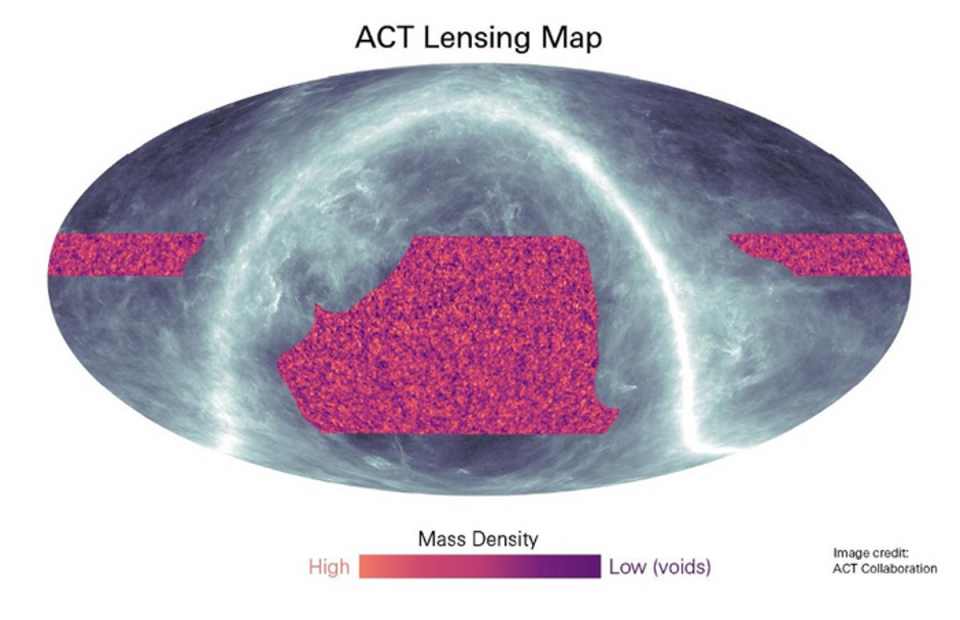Scientists create vast map of dark matter in the universe

Scientists have created the most detailed map of dark matter in the universe yet – and have used it to make major breakthroughs in our understanding of the cosmos.
Researchers from the Atacama Cosmology Telescope (ACT) collaboration used the telescope to build an image of where the dark matter is distributed across the sky, including deep into the cosmos.
It has already been used to confirm a theory from Einstein about how massive structures grow and bend light throughout the history of the universe. And it could help solve an ongoing debate that has led to a crisis in cosmology.

Dark matter makes up almost all of the universe: accounting for about 85 per cent of it and influencing the way it evolves and grows. But detecting and researching it has proven difficult because it does not interact with light or other electromagnetic radiation, and seems only to interact with gravity.
In an attempt to better understand it, more than 160 collaborators used the Atacama Cosmology Telescope in Chile to look at light from the very beginnings of the universe. Scientists were able to look back at a picture of when the universe was only 380,000 years old, which is known as the cosmic microwave background radiation, or CMB.
With that picture of the CMB, scientists can track how it is warped and changed when it is pulled by the gravitational force of the large, heavy structures in the universe. Those heavy structures include dark matter, so that scientists can build a picture of where the heavy “lumps” can be found in the universe.


